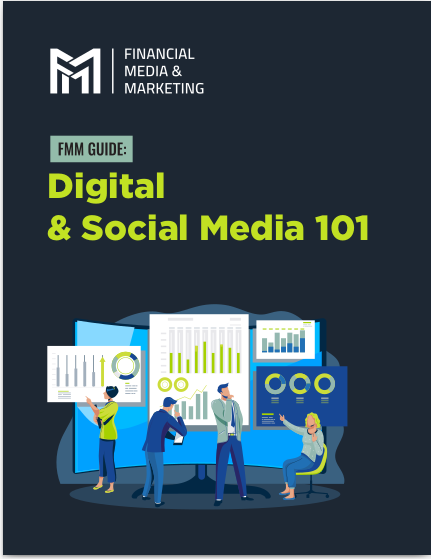Key Takeaways:
-
Your website might be turning away potential clients due to poor design, confusing navigation, or a lack of trust-building elements.
-
Implementing simple but effective improvements can increase engagement, credibility, and ultimately, conversions.
The Costly Mistake That’s Hurting Your Financial Advisory Business
You might be the best financial advisor in your field, but if your website isn’t designed to build trust and engage visitors, you could be losing potential clients before they even speak to you. In 2025, your online presence is often the first interaction someone has with your business. If your website fails to impress, those visitors will leave—and they won’t come back.
Why First Impressions Matter More Than Ever
You Have Less Than 10 Seconds to Capture Attention
Online users are impatient. Research shows that within the first 10 seconds of landing on a webpage, visitors decide whether to stay or leave. If your website looks outdated, cluttered, or unprofessional, they’re gone. And they’re probably clicking over to your competitor.
Mobile Users Expect a Seamless Experience
In 2025, mobile browsing accounts for over 60% of all web traffic. If your site isn’t mobile-friendly, loads slowly, or requires zooming and pinching to read, you’re losing leads. Your website needs to be fully optimized for smartphones and tablets, ensuring a smooth experience regardless of the device.
The Most Common Website Mistakes Financial Advisors Make
1. Overcomplicated Navigation
If visitors struggle to find essential information—such as your services, contact details, or booking options—they’ll leave. Your site should have a simple, logical structure, with clear menus and an easy-to-follow layout.
2. Lack of a Clear Call-to-Action (CTA)
Your website should guide visitors toward a specific action—whether it’s scheduling a consultation, signing up for a newsletter, or calling your office. If your CTA is unclear, buried, or missing, you’re letting potential clients slip through the cracks.
3. No Trust Signals
People need to trust you before they hire you. If your website lacks professional credentials, testimonials, industry certifications, or client reviews, it may appear untrustworthy. In an era where scams are prevalent, potential clients will be skeptical if they don’t see proof of your expertise.
4. Slow Loading Speed
A slow website is a dealbreaker. Studies indicate that 40% of visitors leave if a site takes more than three seconds to load. Investing in proper hosting, optimizing images, and improving backend performance will keep your site running quickly.
5. Outdated or Generic Content
If your website looks like it hasn’t been updated in years, visitors will assume your financial knowledge is just as outdated. Regularly publishing fresh, valuable content can set you apart as an industry leader.
How to Fix Your Website and Start Winning Clients
1. Make Navigation Simple and Intuitive
Keep your menu straightforward, with no more than five or six main categories. Essential pages should include:
-
Home (Concise introduction and value proposition)
-
About (Your credentials, experience, and mission)
-
Services (Clear descriptions of what you offer)
-
Testimonials (Reviews that build credibility)
-
Contact (Easy ways to reach you, with a prominent CTA)
2. Optimize for Mobile Users
Your website must be mobile-responsive, meaning it adjusts seamlessly across devices. Ensure text is readable, buttons are easy to tap, and navigation remains smooth on any screen size.
3. Use Strong Calls-to-Action
Your CTA should be bold, clear, and consistent. For example:
-
“Book a Free Consultation Today”
-
“Get Your Personalized Financial Plan”
-
“Schedule a Call to Discuss Your Goals”
4. Boost Credibility with Trust Signals
Visitors need to see proof of your expertise. Include:
-
Professional certifications and licenses
-
Client testimonials and reviews
-
Media mentions or industry awards
-
Security badges for data protection
5. Improve Site Speed and Performance
If your site is slow, check:
-
Hosting quality (Invest in a reliable hosting service)
-
Image optimization (Compress images without sacrificing quality)
-
Page caching (Store parts of your site for faster loading times)
-
Code efficiency (Avoid bloated scripts and unnecessary elements)
6. Keep Your Content Fresh and Engaging
Regular updates signal to visitors (and search engines) that your business is active and informed. Consider adding:
-
A blog with financial tips and insights
-
Video content explaining services
-
FAQs answering common client questions
The Hidden Cost of a Bad Website
A poorly designed website isn’t just frustrating—it’s costing you money. Every lost visitor is a lost opportunity. If 100 potential clients visit your site per month and 70% leave due to poor user experience, that’s 70 potential leads gone. Multiply that over a year, and you’ll see how a bad website directly impacts your bottom line.
Your Website Should Work for You, Not Against You
A strong website is your most powerful marketing tool. It works 24/7, generating leads, answering questions, and positioning you as a top-tier financial expert. By making simple improvements, you’ll turn passive visitors into engaged clients who trust your expertise.










